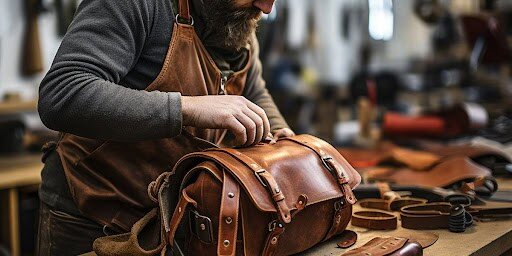Scratches on leather can be frustrating—especially when it’s your favorite wallet, bag, or jacket. But the good news? You don’t need to replace your leather product. With the right steps, you can repair leather scratches at home and restore your item’s classic charm.
In this guide, we’ll show you how to fix scratches on leather goods, whether they’re light surface marks or deeper scuffs. Perfect for owners of luxury leather items and minimalist accessories, including our own range at Styled Leather.
Understanding Leather Scratches: Types & Causes
Before you start to know how to fix scratches on leather, it’s important to understand what type of leather scratch you’re dealing with.
1. Surface Scratches (Minor)
These are light marks that don’t break through the leather surface. They often happen from fingernails, zippers, or light contact.
2. Deeper Scratches (Moderate)
These go beyond the surface and slightly cut into the leather grain. They may feel rough when you touch them.
3. Gouges or Cuts (Severe)
These are deep and may expose the inner layers. These usually require professional help or a full leather repair kit.
How to Fix Minor Leather Scratches
Most small scratches can be buffed out with easy techniques.
✦ 1. Rub With Your Fingers
For high-quality, full-grain leather, natural oils from your skin can sometimes reduce the appearance of scratches.
How: Gently rub your finger over the scratch in a circular motion. This can re-distribute oils and soften the mark.
✦ 2. Use a Leather Conditioner
A good leather conditioner hydrates the material and helps fade small scratches.
Steps:
- Clean the area with a soft cloth.
- Apply a small amount of leather conditioner.
- Gently rub it in using circular motions.
- Let it absorb for a few minutes, then buff with a dry cloth.
👉 Pro tip: Always test on a hidden area first.
Fixing Medium Leather Scratches at Home
For slightly deeper scratches, you’ll need a bit more effort and product.
✦ 1. Leather Oil or Cream
Apply a leather repair cream or oil to fill the scratch and restore color.
What you’ll need:
- Leather cleaner
- Leather cream matching your item’s color
- Soft cloth
Instructions:
- Clean the scratch with a leather-safe cleaner.
- Apply cream using a soft cloth or sponge.
- Rub gently into the scratch.
- Let it dry and buff it with a clean cloth.
✦ 2. Colored Leather Balm
If the scratch affects the color, a leather balm can recolor and conceal it.
Repairing Deep Leather Scratches
If the scratch has cut into the leather, you’ll need a leather repair kit.
✦ How to Use a Leather Repair Kit
- Clean the damaged area.
- Fill the scratch with a leather filler.
- Let it dry (use a hairdryer on low if needed).
- Sand lightly with a fine grit (if instructed).
- Apply leather colorant to match.
- Seal it with a protective topcoat.
📦 Tip: Some leather filler kits come with color-matching guides for ease.
How to Prevent Leather Scratches
Once you’ve repaired your leather, it’s smart to protect it going forward.
✅ Keep Leather Moisturized
Dry leather is more prone to scratching. Use a leather conditioner every 1–2 months.
✅ Avoid Sharp Objects
Be mindful of keys, jewelry, or bag chains that may graze the leather.
✅ Store Properly
Keep your leather goods in dust bags and away from direct sunlight and humidity.
Should You DIY or Go to a Professional?
- DIY: Best for surface and moderate scratches.
- Professional repair: Necessary for deep cuts, expensive items, or sentimental pieces.
If you’re unsure, reach out to a leather care specialist before trying any repair method.
Shop Scratch-Resistant Leather Accessories
At Styled Leather, we focus on minimal, durable designs made from high-quality materials. Our leather bags, wallets, and accessories are built to last—and easy to care for.
💼 Featured: Styled Leather Men’s Laptop Backpack
👜 Also Try: Styled Leather Makeup Bag – durable and sleek.
Final Thoughts
Scratches on leather aren’t the end of the road. With a little care and the right method, your leather piece can look close to new again. Whether you choose to DIY or seek a professional, keeping your leather conditioned and protected is the best long-term strategy.
